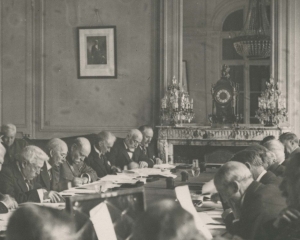The 20th learning unit of the EU Non-Proliferation and Disarmament e-learning course produced by PRIF with the financial assistance of the European Union is online. It was written by Benjamin Hautecouverture from Fondation pour la Recherche Stratégique (FRS) in Paris.
This learning unit aims to provide a brief history of arms control in a classical chronological order, focusing primarily on the West, from antiquity to the present. In doing so, it postulates that arms control may be considered a relevant discipline from that time, along a more or less continuous chronological line. In reality, there is nothing obvious about these assumptions. In the strictest sense, it could be argued that arms control as a discipline emerged in the 1950s in the context of the bilateral US–USSR strategic relationship, within the very specific framework of the bilateral nuclear deterrence dialogue in a very dated context of ideological and strategic bipolarization of the world. This is why the very question of what is arms control is posed as such in the introduction to this module, and must feed into the unfolding of a long history.
To be fair, it would be appropriate to elaborate on this point by warning that this course is intended to illustrate the various ways in which the West, in particular, has approached the question of the volume of violence in military affairs, between human communities which become essentially interstate from the moment the modern state is born.
Naturally, because the discipline is structured in the second half of the twentieth century, this course focuses on shorter periods and makes the subject more dense. The aim is to detail the different phases that led to a multiplication of initiatives at the end of the last century, to the point where arms control became near synonymous with international security.
At the time of writing, the Russian invasion of Ukraine has been ongoing for three weeks. This historic event, likely one of the foundational events of the present century, will leave its mark on the contemporary history of arms control in a way that is still too early to define. Though it reminds us that the historical evolution of war itself has always been accompanied by attempts to limit its effects, whatever the method. The history of arms control is the reverse side of a history of war between peoples.
Further information can be found on our eLearning-website and the programme-website.
